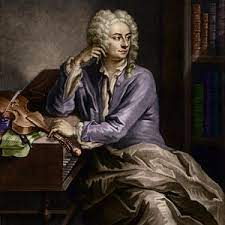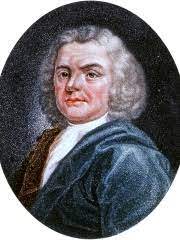

Francesco Gasparini
Born: 1661Died: 1727
Education: studied in Rome with Corelli and Pasquini.
Career: the instructor of Marcello, Quantz and Domenico Scarlatti. He was musical director of the Ospedale della Pietà, where he employed Antonio Vivaldi as a violin master.
A probable student of Corelli, Francesco Gasparini was a composer of some repute, specializing in operas and sacred vocal music. He was also an important educator and canny administrator; it was Gasparini who hired Antonio Vivaldi as violin master at the girls' orphanage where the latter would base most of his career. Most of Gasparini's non-operatic music shows great skill with free counterpoint, and his operas were models for the next generation of composers, notably Handel. By the time he was about twenty he was serving as organist at Madonna dei Monti in Rome; it was there that he may have studied with Corelli, as well as Pasquini. The next couple of years found him studying voice and composition at the Bologna Philharmonic Academy, but Gasparini seems to have been restless; in 1686 he and his brother were living and studying with Legrenzi in Venice; the following year he was working in Rome as violinist and composer to Cardinal Benedetto Pamphili. In Rome, Gasparini developed a cordial relationship with Alessandro Scarlatti, and in 1705, after Gasparini had relocated to Venice, Scarlatti sent his son Domenico there to study with him. Gasparini was in Venice because in 1701 he had become director of musical activities at the Ospedale della Pietà; he seems to have landed this post on the strength of the operas and cantatas he had been publishing since the mid 1680s, which were apparently well received. Within five or six years, Gasparini transformed the Ospedale into one of Italy's finest conservatories, with the likes of Antonio Vivaldi on staff. During this time Gasparini became a prolific opera composer, cranking out three or four each year. By 1713 Gasparini was restless again; he departed the Ospedale, supposedly on a six-month leave, and eventually settled again in Rome. From 1716 to 1718 he worked there as maestro di cappella to Prince Ruspoli; after that he was employed by the Borghese family. Gasparini's production of new operas began to taper off around 1720; he died in 1727, just a few months after taking up the post of maestro di cappella at the church of St. Giovanni in Laterano. Gasparini's cantatas were technically skillful and much admired, but his greatest influence was in opera, his late works setting stylistic standards for the next generation of composers, including Handel. His manual on the figured bass, L'armonico pratico, was required reading for students until the beginning of the nineteenth century.

